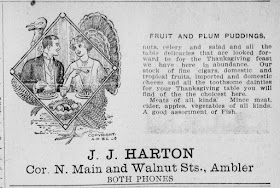 |
| A typical parish record from the Norwegian Digital Archives |
Anyone with Norwegian ancestry should be aware of the biggest free Norwegian online database of records:
The Digital Archives. Here you will find a wealth of information: censuses, parish records, property and tax lists, etc. The trick is finding the ones specific to your ancestors, which can be difficult because many of the records aren't indexed so you may have to manually go browsing through the scanned images. There are some ways to avoid this though.
But the easiest starting point is with the Norwegian National Censuses, since several of them are indeed indexed. You'll notice that they only have indexed censuses for 1801, 1865, 1875, 1900, and 1910. And given that most Norwegian immigration to the US occurred pre 20th century, you'll be lucky if you can make use of three of them. For me personally, all my Norwegian ancestors had left or died by 1865 so I can only benefit from the 1801 census. There are digitized records for earlier censuses but since the latest one is 1701, your research may not reach back that far just yet. There are also more censuses for local areas, which I'll cover below.
The other tricky thing about searching Norwegian records is their names. As I have described before, Norwegians were big on patronymic surnames for each generation, which meant that each individual had a different surname from their parents. For example, Ole Tronsen is the son of Tron Gundersen and his father was Gunder Leegsen. Not always knowing what an individual's parent's surnames were makes searching difficult sometimes but keep in mind that namesakes within families were popular. Also be aware that it was not an uncommon practice to name a child after their deceased sibling. This may seem insensitive, as though merely trying to replace a deceased child with another, but in the past, it was probably viewed as honoring and remembering the deceased. Lastly, some Scandinavian given names can be difficult to read, because they are unfamiliar to the rest of the world. Often, they do not appear on my given names reference source, BehindTheName.com, so a good reference for this can be found from FamilySearch.org's wiki:
Scandinavian Given Names.
After you have found census records, the
parish records will probably be your next and biggest source. Be aware that some of them are indexed over on another free source,
FamilySearch.org. I believe these are the same records which have been indexed by volunteers in what's called
The Digital Inn which can also be searched on the Digital Archives website
here. Though I find FamilySearch much easier to use, they only have the BMD parish records, whereas the Digital Inn has all kinds of other documents including local censuses, another source not to miss.
With both FamilySearch and The Digital Inn, it's important to try alternate spellings. For example, one of my branches called Narum was alternately spelled Nærum and Norum. This brings me to another point about the Norwegian alphabet having extra letters: æ, ø, å - so that's another thing to watch out for.
One thing to know about parish records is that an individual was often identified by the farm name they lived on. This often makes up for the lack of a consistent surname but of course individuals would move around, especially from generation to generation. But if you know a family lived on the farm named "Fladen", you can often more easily find siblings of ancestor by looking for the farm name.
But once you know what name, parish and date you're looking for, you can usually find the original document pretty easily. Keep in mind, of course, varying spellings can mean you might miss some indexes and sometimes it's good to browse through the images to see what you can find. This is not easy since they are hand written and in Norwegian. That's why I like to keep a "cheat sheet" of regularly used words in documents. Here's a few:
- Fødte og døpte - Born and baptized
- Konfirmerte - Confirmations
- Ekteviede - Wedded
- Døde og begravede - Dead and buried
- Trolovede - Betrothed
- Introduserte kvinner - Introduced women
- tittel- og registersider m.m. - title and index pages etc
- Kronologisk liste - Chronological list
- Vaksinerte - Vaccinated
- Enkemand - Widower
- Ungkarl - Bachelor
- Vigd - Marriage/wedding
- Forl/Forlove - Engagement
- år - years
- måneder - months
- uker - weeks
- dager - days
- alder / alderen - age / aged
If you need more translations, I always use
Google Translate. Be aware that spellings have changed since some of these records were written and sometimes, abbreviations were used. Occasionally, I find that the translate app offers a slightly different spelling or that the original spelling is has other origins, like Danish.
Once you've got your census and BMD parish records, and therefore adequate vital data of your ancestors going back as far as possible, see if you can find any other records such as lax lists, land property documents, emigration parish records, etc.
I find the Digital Archives website is not super easy to navigate, in part because the English version doesn't always seem to "stick" when searching the indexes. This combined with the fact that many of the records aren't indexed at all, I think a lot of people don't use the website to it's full potential. Hopefully, this will help point you in the right direction but if not, just ask in the comments section below and I will do my best to answer.










